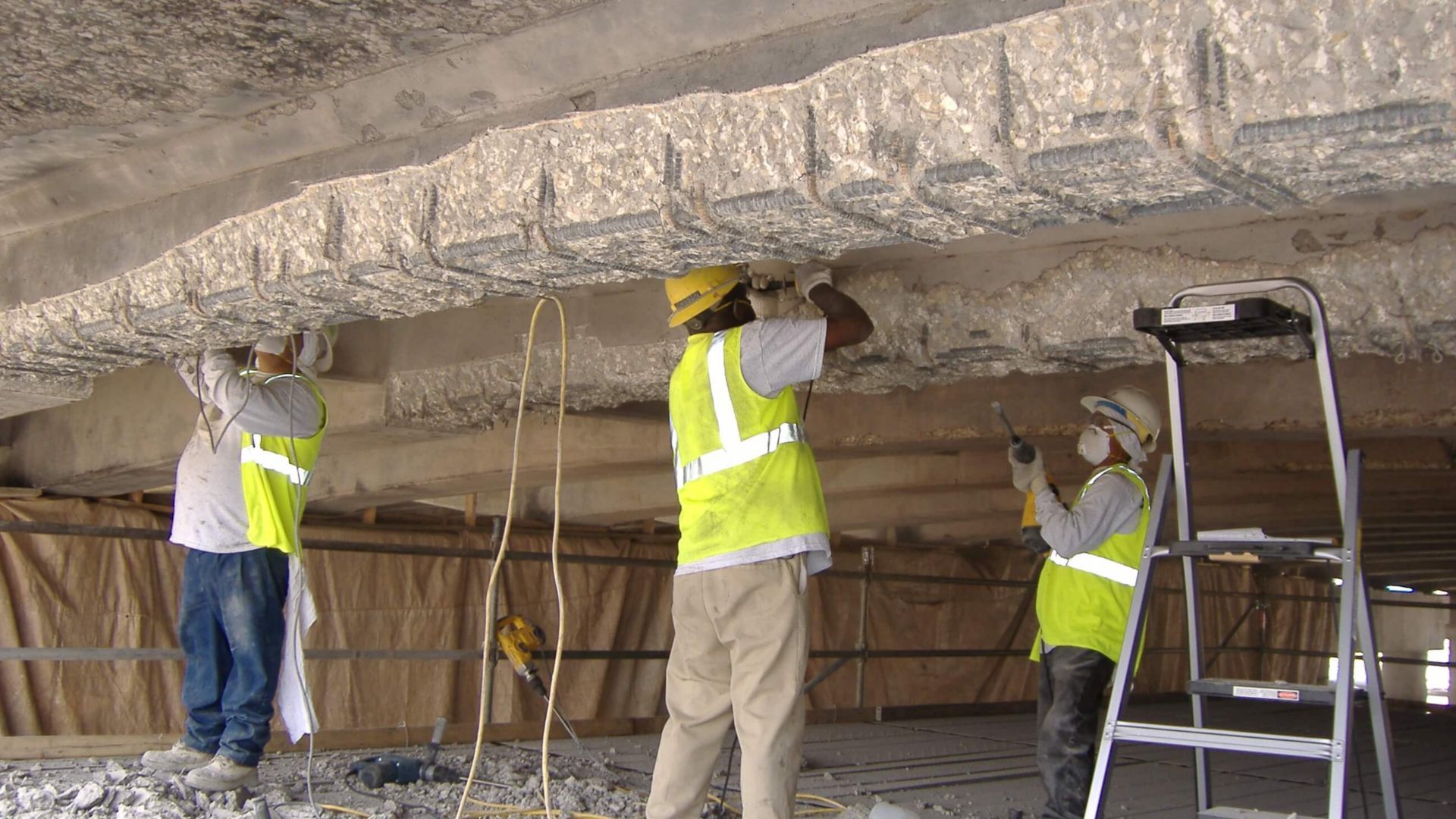2006
Dallas/Fort Worth Texas
STRUCTURAL CHARACTERISTICS
State Highway 183 is a major east/west highway between Dallas and Fort Worth. It is also the major route to the south entrance of DFW Airport. The highway carries three lanes of traffic in each direction. The average daily traffic (ADT) count for the eastbound lanes is 91,000.
MacArthur Blvd. is a major north/south arterial route carrying two lanes of traffic in each direction through Irving traversing from Coppell in the north to I-20 in the southern portion of the Metroplex. It is also the main ambulance route to the Baylor Hospital complex, the largest hospital in the city of Irving. The ADT on MacArthur is 32,000. The State Highway 183 bridge structure over MacArthur Boulevard, was constructed in 1953, consists of two abutments and three bents that support a series of parabolic beams. The beams are further strengthened by diaphragms and all this supports a concrete deck with an asphalt overlay. The bridge was widened in 1969 to make it 2- 36’ wide roadways with 12’ shoulders and a center traffic barrier. All of the elements are cast-in-place, reinforced-concrete.
PROBLEMS THAT LED TO REPAIRS
The morning of Saturday, May 28, 2005, the start of a Memorial Day weekend, a 3,000-gallon fuel tanker heading east on State Highway 183 barreled through a guardrail and spiraled off a bridge at about 6:30 a.m. before landing upside down and exploding several times on MacArthur Boulevard in Irving, Texas. The explosion killed the driver, severely burned and cracked the highway’s concrete bridge, shutting down eastbound lanes over MacArthur Boulevard for more than 12 hours. State transportation officials indicated the major thoroughfare connecting Tarrant County and downtown Dallas could be limited to one lane for up to three weeks. It took firefighters 30 minutes to extinguish the blaze. Officials initially closed all lanes in both directions of both roads before reopening State Highway 183 westbound lanes at 11:15 a.m. It took 11 hours to clean up the wreckage. There was extensive heat, and the concrete on the bridge columns and beams spalled and “popped” as a result. Later that afternoon, state transportation officials placed concrete barriers on eastbound State Highway 183 to block off the two right lanes and prepared to open one eastbound lane and both service roads Saturday evening.
State transportation engineers would not know the full extent of the damage nor when all lanes would reopen until Tuesday. It was believed that the MacArthur Boulevard underpass probably would not reopen until the bridge was repaired. Gazing at the charred structure, TXDOT engineers said they had never seen anything like the combination of bridge damage and potential traffic headaches confronting them on State Highway 183 due to this accident.
THE REPAIR
Columns, beams, diaphragms and the bridge deck were all repaired using high-velocity, wet-spray application. Two pumps were utilized with a third on hand to serve as a backup. Two-sided wood forms were fabricated to enable the placement of the mortar while maintaining the unique parabolic shape of the beams. The Bent enlargement was formed and poured. The CFRP was laid by hand, wet. The repair contractor worked crews of 6-8 men for 10 hours per shift. Two 10-hour shifts worked, 7 days/week.
During demolition it became evident that the required removals significantly exceeded that originally estimated. In order to ensure the completion date would be met a second repair contractor was hired to spray the beams between Bent 4 and Abutment 5 while the first repair contractor continued with demolition and surface preparation. A third contractor was hired to form and pour the concrete at the large straddle bent which required 12 cubic yards of concrete. Next the General Contractor installed the CFRP and the guardrail. After placement of the CFRP, the beams and columns were coated with an elastomeric coating to provide UV protection to the epoxy/CFRP system and a more uniform appearance to the structure. Finally, a paving contractor removed and replaced the asphalt overlay. The project was completed on July 15, 2005; 4 days ahead of schedule.
10 YEARS LATER
With the original repair finished in the fall of 2006, it has now been almost 10 years since construction was completed and 10 years since that fateful morning in May when the large fuel tanker spiraled into MacArthur Boulevard, rendering the overpass unusable. The bridge itself is now over 60 years old and over the last 10 years, more than 300 million vehicles have been estimated to have traveled on the overpass.
The site was visited again in April of 2016 and another visual inspection was performed. The uncoated concrete work looks the same as it did in 2006, with no signs of excess loading including cracking. The columns and beams coated with a rigid acrylic coating, while some show the signs of being over an active state highway, i.e. a little dirty, also show no signs of distress and continue to protect the concrete, epoxy and carbon fabrics underneath. Currently, a local Texas university, along with a local governing body for the highway, is using the MacArthur Boulevard overpass as a case study to highlight the effects of emergency repairs like this. The quick decisions and value designs for repair are some that could possibly be emulated in future emergencies based on the great success over State Highway 183.

